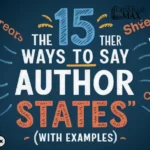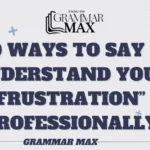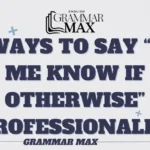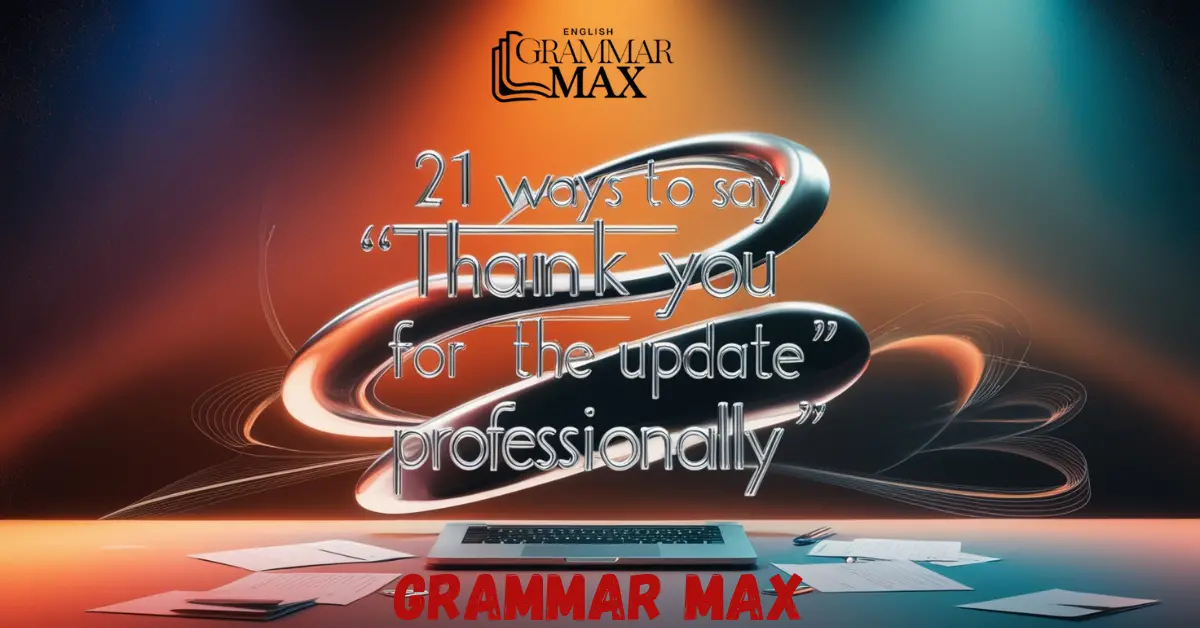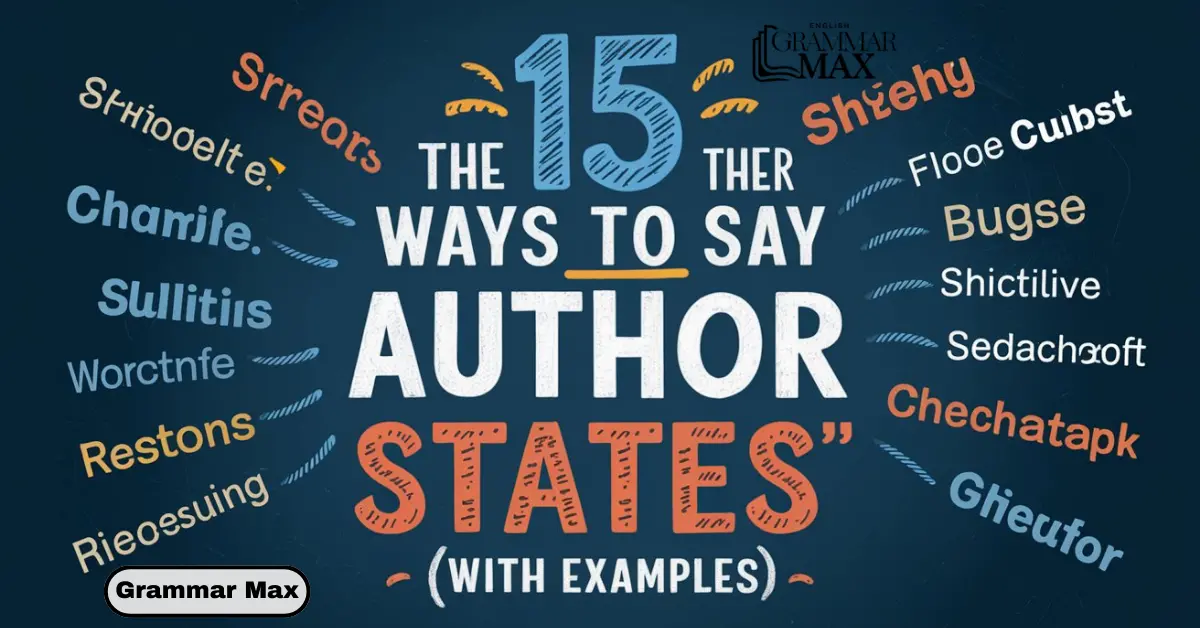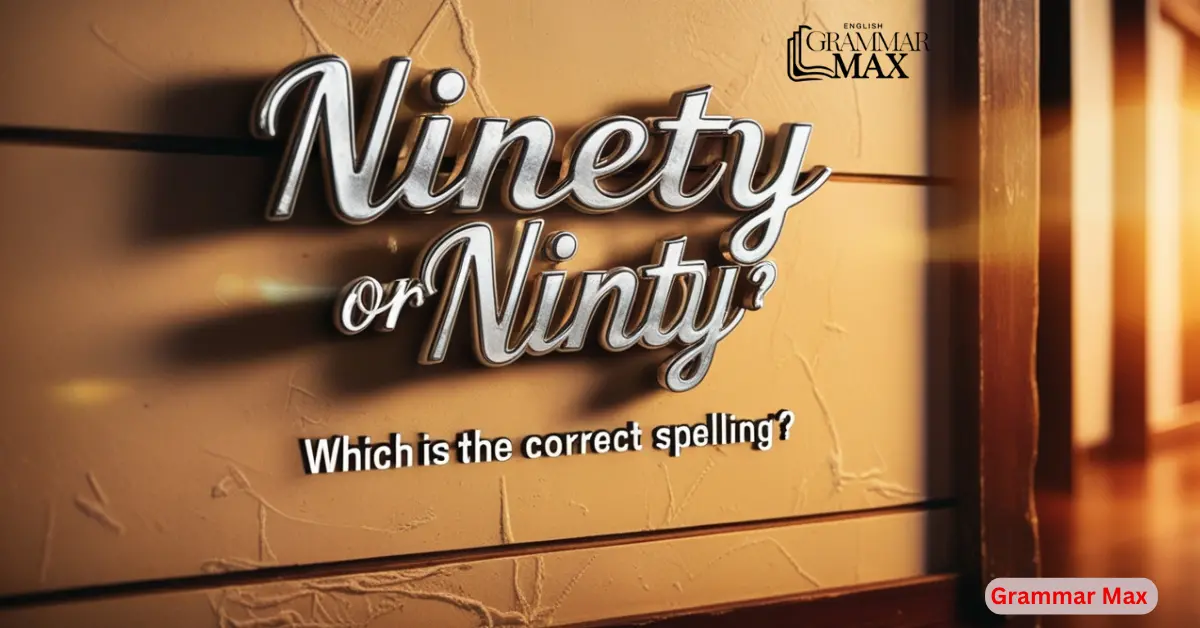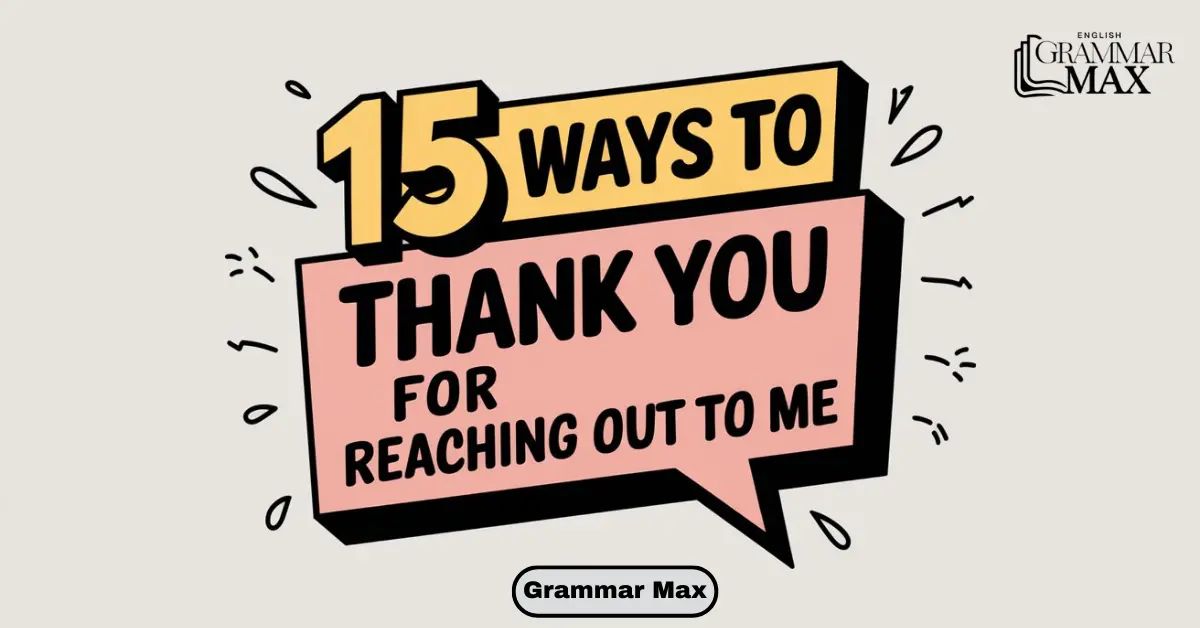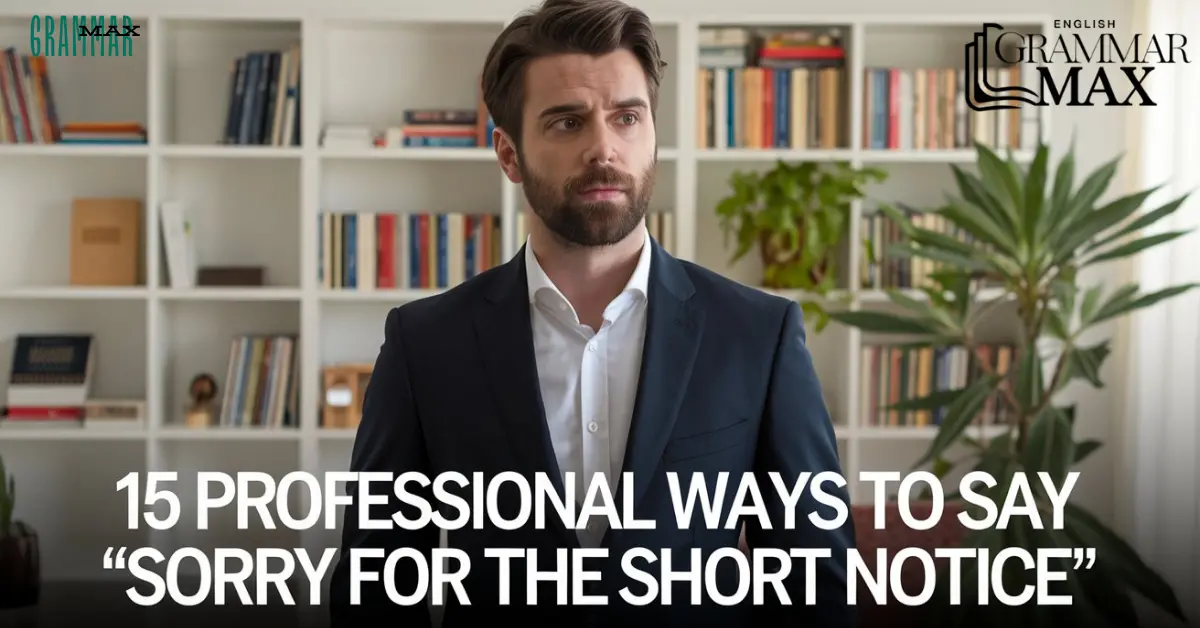In professional communication, expressing gratitude for updates is essential for maintaining smooth interactions, showing appreciation, and fostering relationships. While a simple “thank you for the update” can suffice, sometimes you want to vary your responses to leave a lasting positive impression. In this article, we’ll explore 21 ways to say “thank you for the update” professionally, offering you a range of alternative ways to respond, along with best use cases and scenario examples for each phrase.
Alternative Ways to Say “Thank You for the Update”

Here are all 21 alternative ways to say “thank you for the update”:
- Thanks for the update Much appreciated
- Thank you for the update I’ll review the information and follow up if needed
- Thanks for keeping me in the loop
- Thank you for the update Let me know if you need anything from my side
- I appreciate the update. Thanks for your effort
- Thank you for the thorough update
- Thanks for updating me. I’ll proceed accordingly
- I appreciate the heads up. Thanks
- Thanks for the information
- Thank you for the prompt update
- Thanks for keeping me informed
- Thank you for the update. I’ve noted the changes
- I’m grateful for the update. It helps a lot
- Thank you for updating me so quickly
- Thanks for the update. I’ll take it from here
- Thank you for keeping me up to date
- Appreciate the update
- Thanks for the update. Let me know if anything changes
- Thank you for the timely update. I’ll keep this in mind moving forward
- Thanks for keeping me updated. It’s great to have this clarity
- I appreciate the update and the attention to detail
1. Thanks for the update. Much appreciated.
This is a concise and professional way of expressing gratitude for receiving an update. It works well in everyday corporate communication where brevity and directness are valued.
Best Use: Use this in emails or chat when you’re acknowledging a status update but don’t need to provide additional feedback.
Example:
Hi John,
Thanks for the update. Much appreciated.
Best regards,
Susan
2. Thank you for the update. I’ll review the information and follow up if needed.
This phrase shows that you acknowledge the update and that you’ll take action, which leaves room for future communication.
Best Use: Perfect for situations where you’re not expected to respond immediately but want to show attentiveness.
Example:
Hi Mike,
Thank you for the update. I’ll review the information and follow up if needed.
Best,
Laura
3. Thanks for keeping me in the loop.
This is an informal yet professional way of expressing that you appreciate staying informed.
Best Use: This is suitable when you’re part of a team or project where staying informed is crucial, but the tone can be relaxed.
Example:
Hey Charlie,
Thanks for keeping me in the loop about the client meeting.
Cheers,
Paul
4. Thank you for the update. Let me know if you need anything from my side.
This response is proactive, showing that you are not only thankful but also willing to assist.
Best Use: Best used when you want to signal availability for further tasks or assistance in a workplace environment.
Example:
Hi Clara,
Thank you for the update. Let me know if you need anything from my side.
Sincerely,
David
5. I appreciate the update. Thanks for your effort.
By including appreciation for the effort, this phrase adds a layer of recognition to the acknowledgment.
Best Use: Use this in professional settings where the person providing the update has clearly put in effort to gather or prepare the information.
Example:
Hi Leo,
I appreciate the update. Thanks for your effort in compiling the report.
Best regards,
Emma
6. Thank you for the thorough update.
This emphasizes that the update was detailed and comprehensive, showing that you value receiving updates that are well-prepared.
Best Use: Ideal in situations where a detailed report or extensive information update has been provided.
Example:
Hi Maria,
Thank you for the thorough update on the project’s progress. It’s very helpful.
Best,
James
7. Thanks for updating me. I’ll proceed accordingly.
This phrase indicates that you’ll take action based on the new information, showing responsibility and proactiveness.
Best Use: Best used in situations where you’re expected to act upon the information given in a business context.
Example:
Hello Alex,
Thanks for updating me. I’ll proceed accordingly with the next steps.
Kind regards,
Hannah
8. I appreciate the heads-up. Thanks.
This casual yet professional response is ideal when the update involves something you needed to be aware of, such as a scheduling change.
Best Use: Works well in office settings where timely updates are essential but don’t require in-depth responses.
Example:
Hey Jack,
I appreciate the heads-up about the meeting time change. Thanks.
Best,
Chloe
9. Thanks for the information.
A simple, direct acknowledgment, best used when the information update is routine.
Best Use: Best for day-to-day workplace communication when no additional response or action is needed.
Example:
Hi Rachel,
Thanks for the information regarding the software update.
Best,
Daniel
10. Thank you for the prompt update.
By adding “prompt,” you’re showing appreciation for the timeliness of the update, making this response more specific.
Best Use: Use this when you want to highlight the professional setting where timeliness matters, such as in project management or customer relations.
Example:
Hi Anthony,
Thank you for the prompt update on the client’s feedback. I’ll adjust the proposal accordingly.
Best regards,
Isabella
11. Thanks for keeping me informed.
This polite response shows that you value staying informed and appreciate consistent communication.
Best Use: Ideal for situations where regular updates are expected but don’t require immediate action.
Example:
Hi Grace,
Thanks for keeping me informed about the marketing campaign’s progress.
Kind regards,
Ethan
12. Thank you for the update. I’ve noted the changes.
This shows that you not only received the update but also that you’ve taken note of the necessary changes.
Best Use: Suitable for acknowledging updates that involve shifts in plans or details in a corporate environment.
Example:
Hi Sam,
Thank you for the update. I’ve noted the changes to the schedule.
Best regards,
Olivia
13. I’m grateful for the update. It helps a lot.
This response adds an extra touch of warmth, indicating that the update was especially useful.
Best Use: Best for instances where the update provides clarity or important information that aids your work.
Example:
Hi Peter,
I’m grateful for the update on the new process. It helps a lot as I prepare for the meeting.
Best,
Sophia
14. Thank you for updating me so quickly.
Here, you’re recognizing the speed of the communication update, making it clear that the timeliness is appreciated.
Best Use: Use this in fast-paced business environments where quick decisions or actions are needed.
Example:
Hi Lucy,
Thank you for updating me so quickly on the supplier’s response. I’ll reach out to them this afternoon.
Best regards,
Ryan
15. Thanks for the update. I’ll take it from here.
This is a professional way to acknowledge an update while indicating that you’ll take the next steps.
Best Use: Best for team collaborations when the update triggers further action on your part.
Example:
Hey Nick,
Thanks for the update. I’ll take it from here and finish up the proposal.
Cheers,
Lily
16. Thank you for keeping me up to date.
This polite response is ideal for corporate communication, where regular updates are part of the workflow.
Best Use: Use this in situations where you are regularly informed about ongoing work or projects.
Example:
Hi Ella,
Thank you for keeping me up to date on the contract negotiations.
Best regards,
Ben
17. Appreciate the update.
Short but effective, this response works in situations where you want to keep the tone friendly yet professional.
Best Use: Best in various scenarios where a quick acknowledgment is all that’s needed.
Example:
Hi Owen,
Appreciate the update on the client’s feedback.
Best,
Abigail
18. Thanks for the update. Let me know if anything changes.
This response not only shows appreciation but also invites further communication if necessary, keeping the door open for future updates.
Best Use: Ideal for situations where the status update might change, and you want to stay informed.
Example:
Hi Mia,
Thanks for the update. Let me know if anything changes before the presentation.
Sincerely,
Lucas
19. Thank you for the timely update. I’ll keep this in mind moving forward.
This response emphasizes both appreciation and the timeliness of the update, while also indicating that you’ll consider the information in future decisions.
Best Use: Use this in a corporate environment where timing is crucial, such as project deadlines or critical business decisions.
Example:
Hi Lisa,
Thank you for the timely update. I’ll keep this in mind moving forward as we plan the next steps.
Best regards,
Mark
20. Thanks for keeping me updated. It’s great to have this clarity.
This phrase highlights the importance of receiving updates and the clarity they provide. It shows that you value clear communication.
Best Use: Ideal for situations where the update helps you better understand a project, task, or issue.
Example:
Hello Jane,
Thanks for keeping me updated. It’s great to have this clarity for our next move.
Best,
Chris
21. I appreciate the update and the attention to detail.
This response is particularly useful when the update involves thorough or meticulous information. It conveys your recognition of the effort put into ensuring accuracy.
Best Use: Suitable for acknowledging detailed reports or important updates that required extra effort.
Example:
Hi Tom,
I appreciate the update and the attention to detail in your report. It will be useful as we finalize our plan.
Best regards,
Sarah
When to Use These Phrases
Use these phrases when you want to acknowledge a status update in a professional setting and express gratitude effectively. They are ideal in business communication, whether you’re responding to a project update, receiving important information, or simply maintaining clear communication. Tailor your response to fit the context and leave a lasting positive impression.
Is it Professional to Say “Thank You for the Update”

Yes, it is entirely professional to say “thank you for the update.” This phrase is a simple yet effective way to acknowledge information in a business setting and show appreciation for someone’s effort. Whether in emails, meetings, or project updates, expressing gratitude helps maintain positive communication. It shows that you value the update and are staying informed. A well-timed “thank you for the update” can also foster strong professional relationships and leave a lasting positive impression.
Frequently Asked Question
How do you say thank you for an update?
You can say, “Thank you for the update” or “Thanks for keeping me informed.”
How do you say thank you professionally?
You can say, “I appreciate your help” or “Thank you for your support.”
How do you thank someone for informing you?
You can say, “Thanks for the information” or “I appreciate the heads-up.”
How do you say thank you for the follow-up?
You can say, “Thank you for following up” or “I appreciate your follow-up on this.”
Conclusion
In a professional setting, it’s important to express gratitude in ways that are both polite and effective. Whether it’s a simple “thank you for the update email” or a more detailed response, these 21 alternative ways of saying “thanks for the update” will help you make a lasting positive impression in different business contexts. By using the right phrases at the right time, you can ensure that your responses reflect professionalism, appreciation, and attentiveness in any workplace communication.
Remember, showing gratitude through your words is not only polite but can also enhance your corporate relationships. Choose the response that fits the scenario, and always aim for clarity and respect in your professional communication.

William Henry is a writer for Grammar Max, a blog that focuses on synonyms and phrases. He loves exploring the quirks of the English language and enjoys helping readers improve their vocabulary. William’s articles are easy to read, fun, and full of useful tips for anyone looking to better understand and use English. Whether you’re a student, a professional, or just someone interested in language, William’s writing on Grammar Max makes learning about words and their meanings simple and enjoyable.

